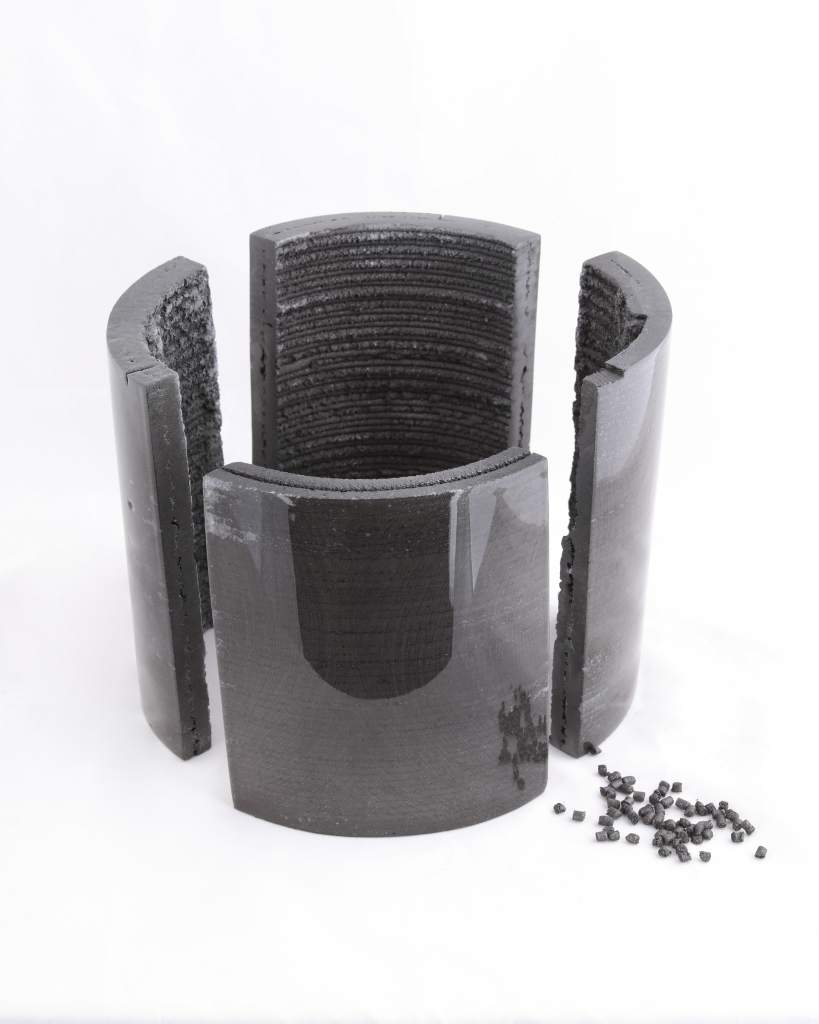A group of researchers at Oak Ridge National Laboratory demonstrated that 3D printed permanent magnets can outperform their traditionally created counterparts. The 3D printed magnets also manage to creating complex geometries without material waste.
With magnets needed everywhere, from the headphones you are using, to the Tesla you wish could afford, their main ingredient, neodymium, is a truly valuable mineral. The group, lead by Parans Paranthaman, first developed a pellet combination of nylon and magnetic bonded powder. The magnetic powder (NdFeB) consists of a combination of three minerals: iron, boron and neodymium. These pellets were then melted, compounded, and extruded using Oak Ridge’s Big Area Additive Manufacturing (BAAM) machine at their Manufacturing Demonstration Facility. BAAM was created in partnership with Cincinnati Incorporated, and is big enough to print furniture, motorcycles, cars and even a house, in a very reasonable amount of time.

Printing to Avoid Waste
Paranthaman’s project, funded by the Department of Energy’s Critical Materials Institute (CMI), manages to avoid the high level of material waste that injection molding magnets produces. With additive technology, the material can made into pellets and the reused. This is especially important considering neodymium is mined and processed outside the United States, which incurs high costs. By reducing waste when manufacturing magnets, the USA also relieves a bit of its dependance on external sources of this mineral.
Alex King, Director of the Critical Materials Institute commented that this technology is a game changer for the manufacturing industry since it removes many of the design restrictions imposed by injection molding.

Neo Magnets and You
NdFeB magnets are the most powerful type of magnet developed so far, and are used in products ranging from computer hard drives and headphones. These magnets are also key to improving clean energy technologies such as electric vehicle motors and wind turbine generators. Being able to experiment more complex geometries through additive manufacturing might lead to more efficient consumption and generation of energy. Last week 3DPI reported on other magnet related research where a group at TU WIEN in Vienna have managed to control magnetic fields of 3D printed magnets through the design of its geometry.
“This work has demonstrated the potential of additive manufacturing to be applied to the fabrication of a wide range of magnetic materials and assemblies,” said ORNL study’s co-author John Ormerod. “Magnet Applications and many of our customers are excited to explore the commercial impact of this technology in the near future”. The fact is, 3D printed magnets open up a very interesting world of possible manufacturing opportunities, for instance, printing complete electric motors eventually without the constraints of assembling parts. Traditional injection molding would require the expense of creating a new mold and tooling for each, but with additive manufacturing the forms can be crafted simply and quickly using computer-assisted design.
If your looking forward to more from the area of 3D printed magnets that seems to be booming at the moment, remember you can sign up to our newsletter here to be the first in the know.
Featured image via: Department of Energy, USA


